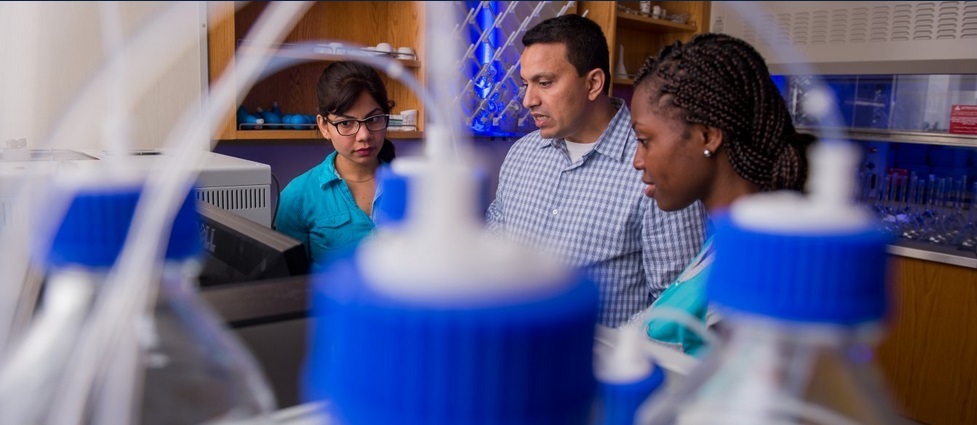2024-2025 Undergraduate Catalog [Archived Catalog]
Department of Chemistry, Biochemistry and Physics
|
|
 Return to: Colleges, Departments, Schools and their Academic Programs Return to: Colleges, Departments, Schools and their Academic Programs

Brian Logue, Department Head
Melody Jewell, Coordinator of Chemistry and Biochemistry Undergraduate Programs
Department of Chemistry, Biochemistry and Physics
Avera Health and Science Center 247
605-688-5151 (Chemistry and Biochemistry)
Robert McTaggart, Assistant Department Head
Daktronics Engineering Hall 255
605-688-5428 (Physics)
Faculty
Professors
Larry Browning, Jihong Cole-Dai, Fathi Halaweish, Adam Hoppe, Yung Huh, Brian Logue, Parashu Kharel, Matthew Miller
Associate Professors
Suvobrata Chakravarty, Darci Fink, Robert McTaggart Jay Shore, Cheng Zhang
Assistant Professor
Rachel Willand-Charnley
Senior Lecturers
Geoff Bonvallet, Melody Jewell, Sara Madsen, Judy Vondruska
Lecturer
Julie Leibold
Emeritus
Henry Gehrke, John Grove, Harry Hecht, William Jensen, Ivan Palmer, Oren Quist, Joel Rauber, Douglas Raynie, James Rice, William Wadsworth
Overview
The mission of the Department of Chemistry, Biochemistry and Physics is to educate, expand the frontiers of knowledge, and provide service. The department provides high-quality educational opportunities that address students’ needs and broaden their perspectives, enabling them to continue the learning process as educated citizens. For those students desiring to pursue careers in chemistry, biochemistry, chemical education, nuclear engineering, physics, and related scientific areas, the department provides degree programs at the baccalaureate, masters, and doctoral levels. Students develop an understanding of the mathematical and theoretical foundations of the physical sciences and develop capabilities in laboratory experimental design and analysis. Students have access to state-of-the-art laboratories, nationwide internship programs, and other resources and opportunities that complement the coursework. The department also maintains strong research efforts in areas appropriate to the broad goals and objectives of a land-grant institution. The department provides service to its various constituencies through selected programs that are continually refined to meet changing needs.
Further, the SDSU Department of Chemistry, Biochemistry and Physics is a founding signatory to the Green Chemistry Commitment. Specific examples of green chemistry are presented in general chemistry, organic chemistry laboratory experiments, a chemical toxicology course, and graduate and undergraduate research.
Department Requirements
All general university requirements must be met to qualify for the bachelor’s degrees in the Department of Chemistry, Biochemistry and Physics. In addition, the following special requirements and rules have been established for all graduates of the department:
- Bachelor’s degrees must include 33 semester credits from upper division courses (300 and above).
- Capstone course in the major discipline.
Programs
Majors
Minors
Graduate Programs*
- Applied Physics Certificate
- Biochemistry (Ph.D.)
- Chemistry (M.S.)
- Chemistry (M.S.) - Chemistry Education Specialization
- Chemistry (Ph.D.)
- Professional Science (M.S.) - Applied Physics Emphasis
* Graduate degrees are offered in collaboration with the Graduate School. For details, see the Graduate Catalog.
Student Support and Engagement Opportunities
The department offers opportunities for student engagement through research and student organizations. For additional information refer to the Research Opportunities page and the Student Organization page on the university’s webpage.
 Return to: Colleges, Departments, Schools and their Academic Programs Return to: Colleges, Departments, Schools and their Academic Programs
|